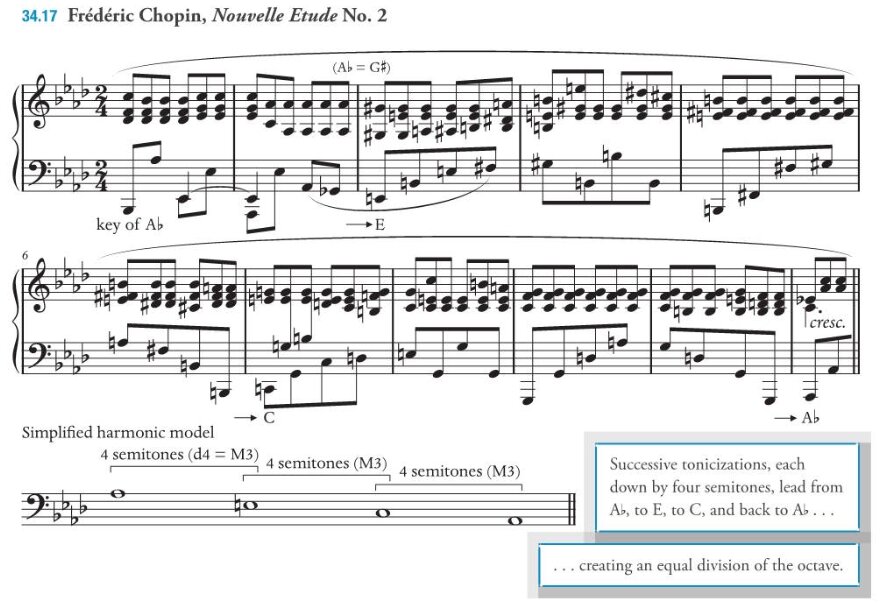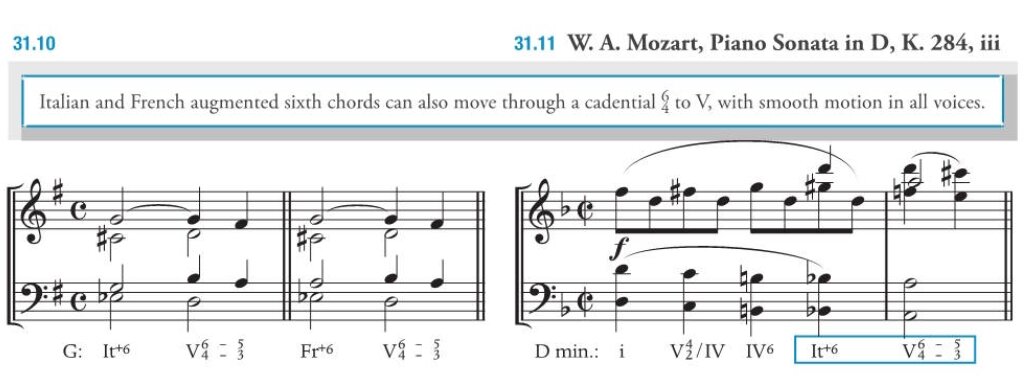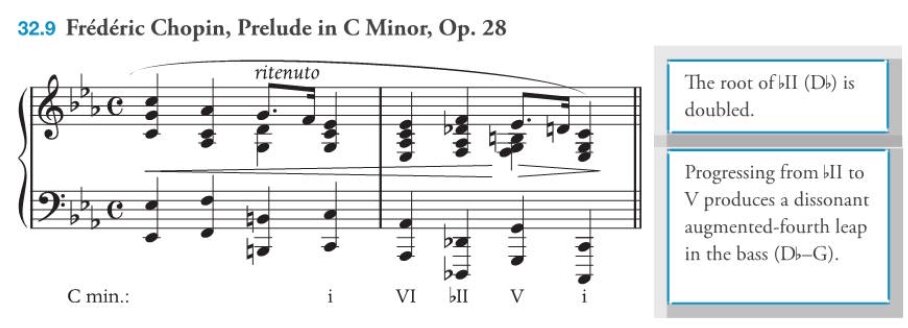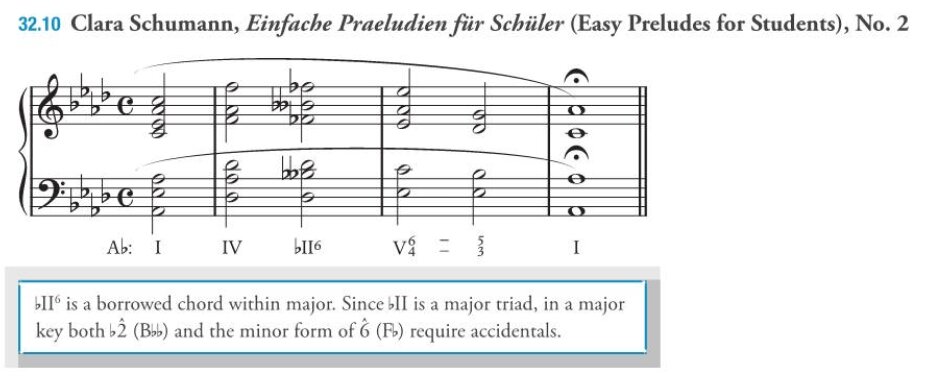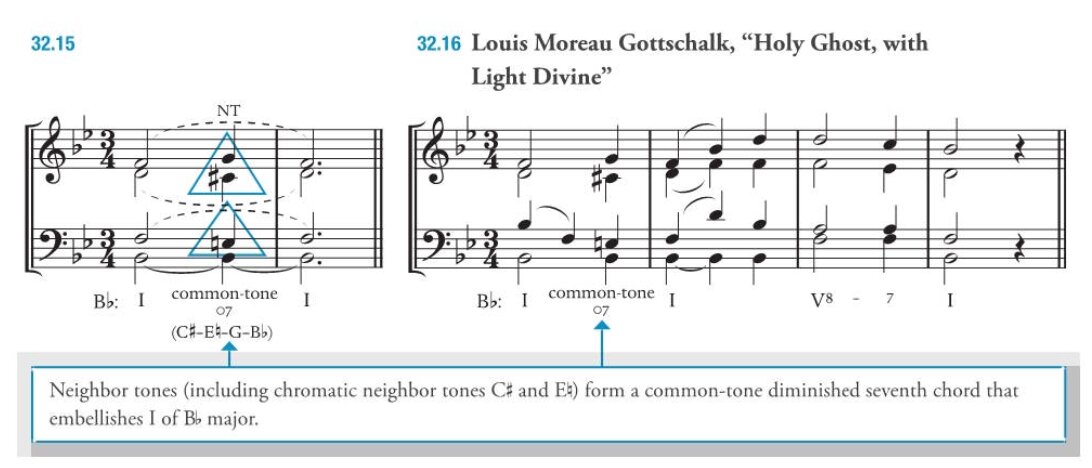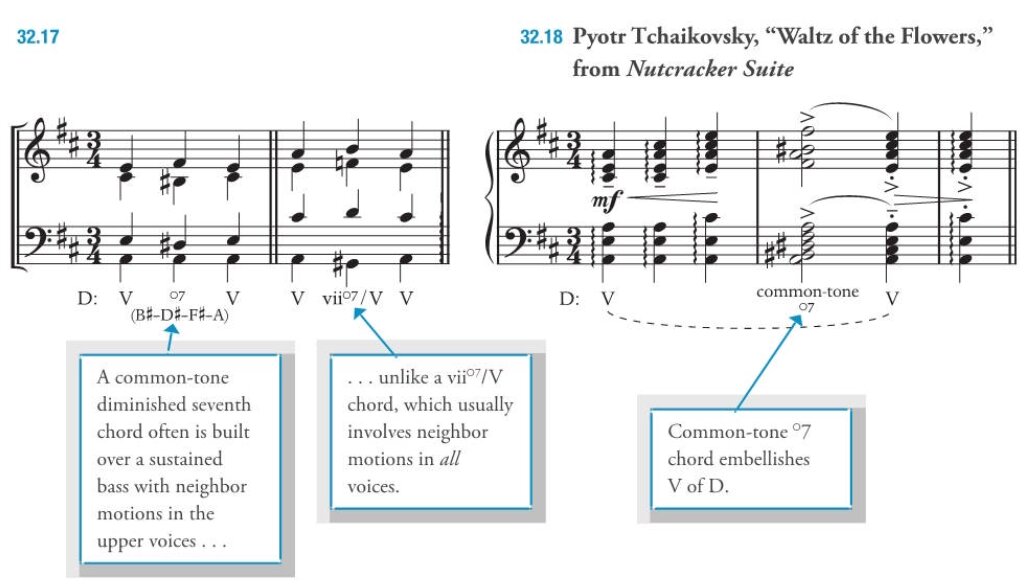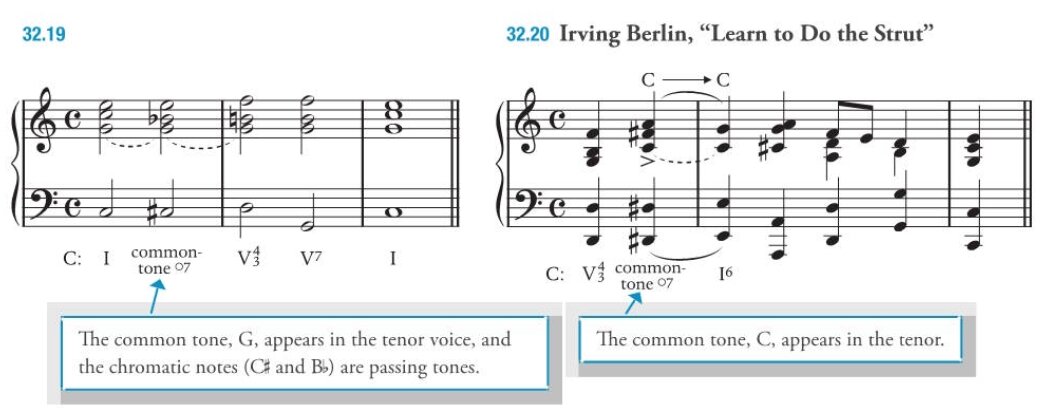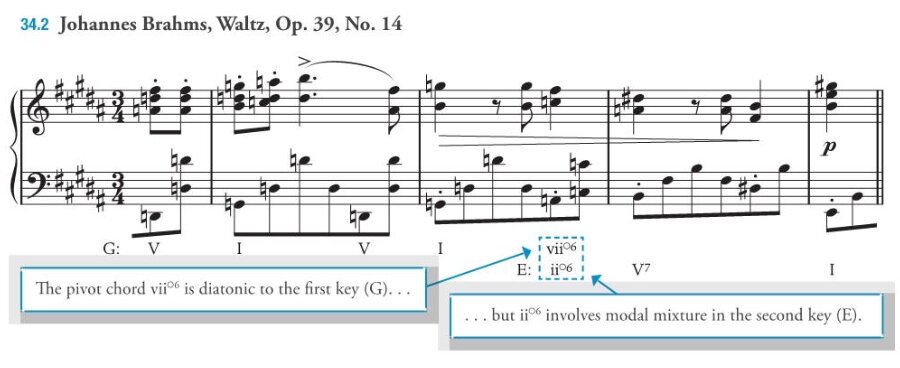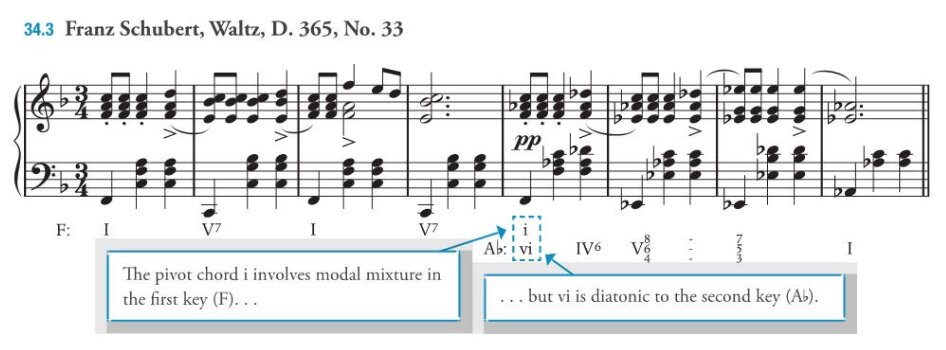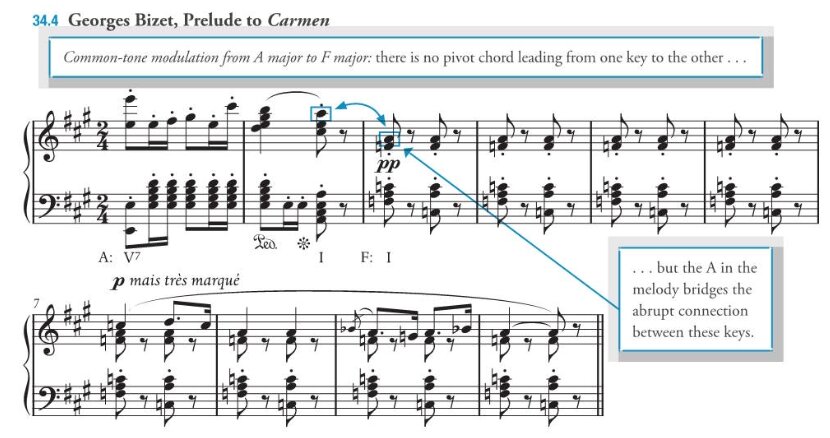Borrowed chords
- a few harmonies from the parallel minor or major (with the same tonic)are borrowed
- using the same scale degree
- similar notes, same function
major borrow minor
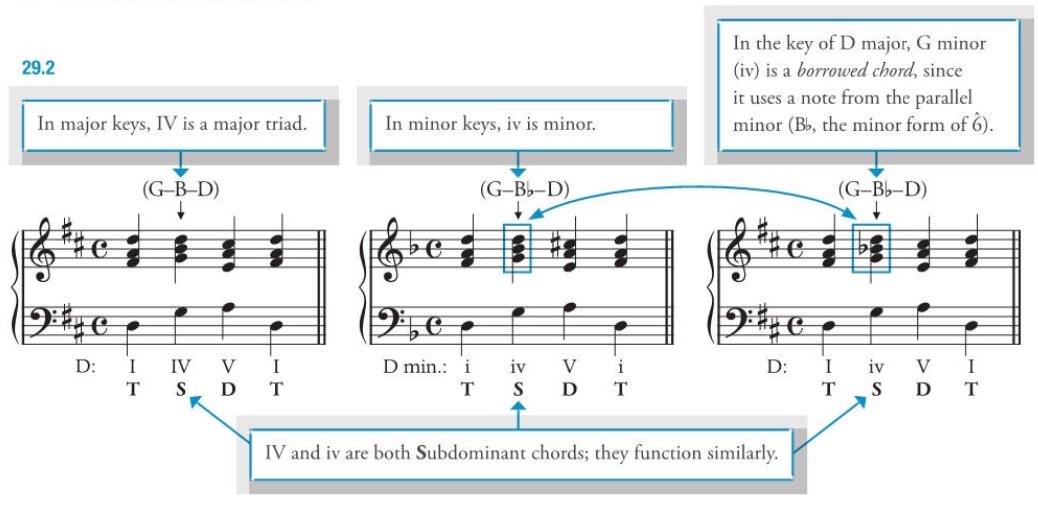
Examples
- $\text{ii}^6$ in C (FAD) -> corresponding degree 2 triad in c minor is $\text{ii}^{\circ 6}$ (F♭AD)
- ${\text{vii}^{\circ}}_3^4$ has notes F♭ABD
- sound


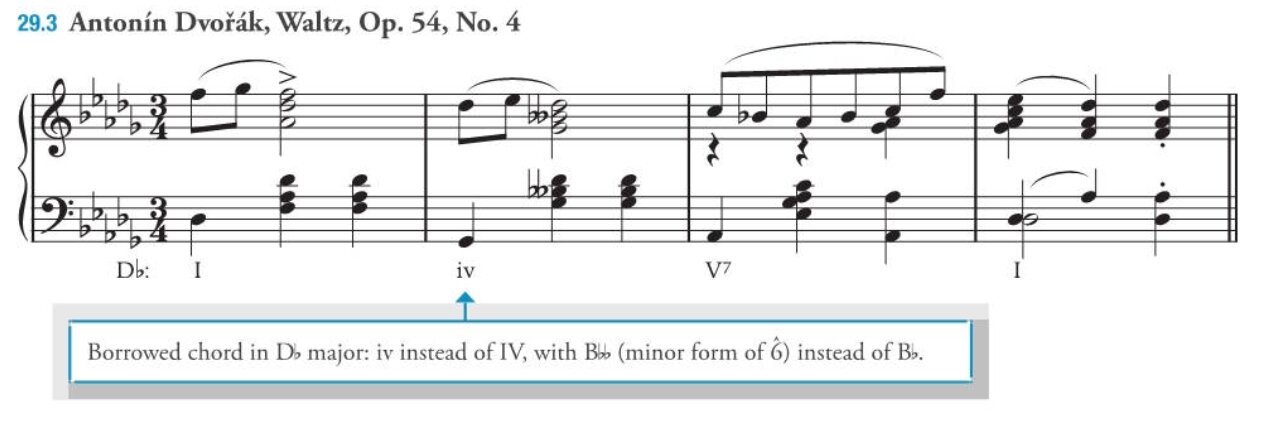
- sound
- $\text{ii}$ in C is DFAC, $\text{ii}^{\varnothing7}$ is DF♭AC
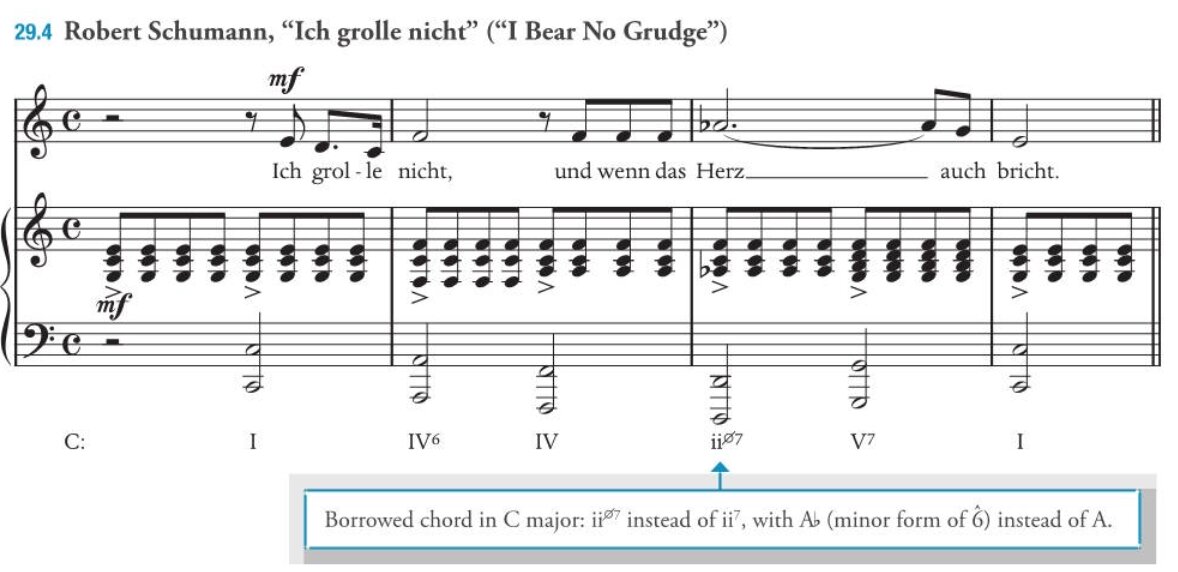
the borrowed chord use the same voice leading as if in minor

frequently borrowed
- $♭\text{VI}$: major triad rooted at lowered $\hat{6}$
- $♭\text{III}$: major triad rooted at lowered $\hat{3}$
- $♭\text{VII}$: major triad rooted at lowered $\hat{7}$

borrowed chords using subtonic $\hat{7}$ (leading tone in minor key) is uncommon

minor borrow major
- modal mixture in minor
- sound

- in minor borrowed chord rarely used in isolation
- chords on raised degrees are not considered borrowed

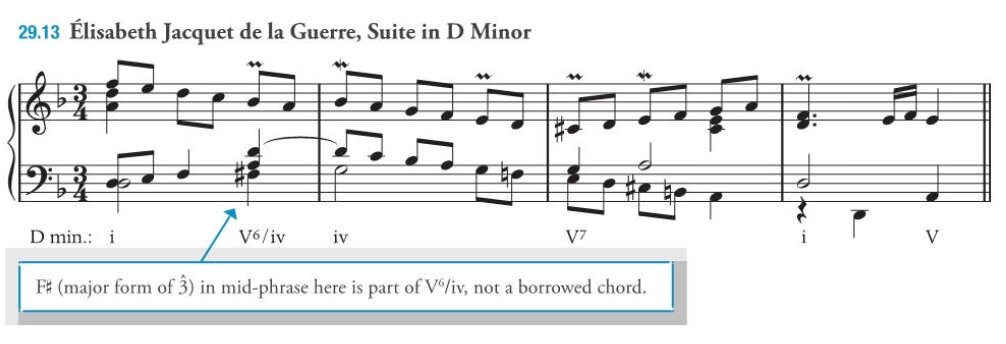
picardy third is considered borrowed
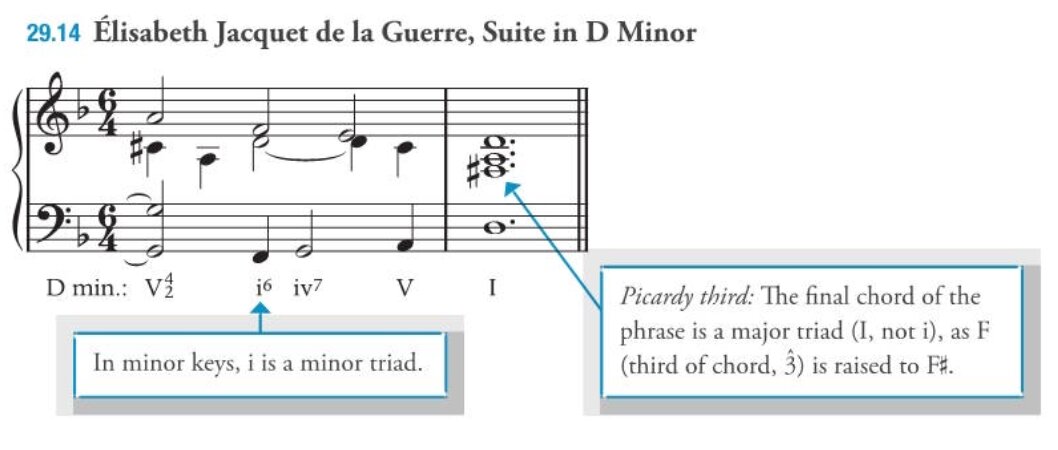
Neopolitan 6th
- major chord on lowered $\hat{2}$, called $♭\text{II}$ (major: ↓re-fa-↓la)(minor:↓si-re-fa )
- usually in first inversion $♭\text{II}^6$, also known as $\text{N}^6$
- appears mostly in minor keys in place of $\text{ii}^{\circ 6}$
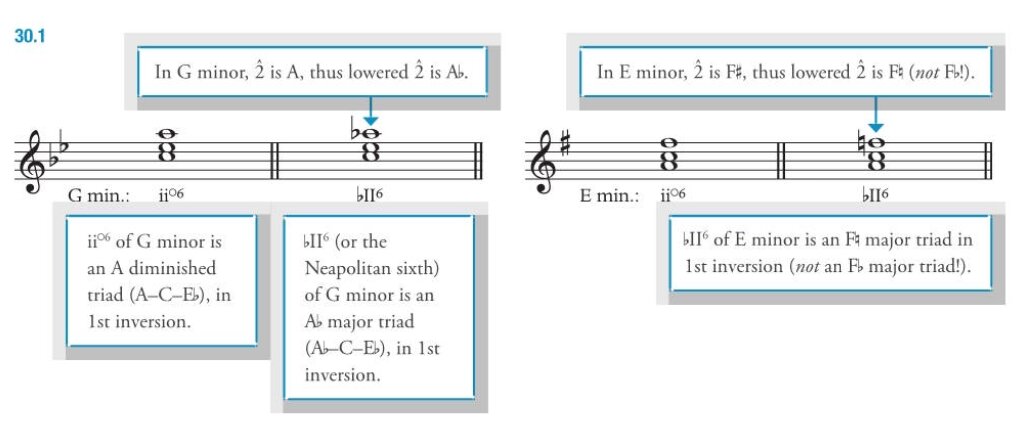
- subdominant (like $\text{ii}^{\circ 6}$)
- leads to dominants
examples
- $♭\text{II}^6-\text{V}$

- $♭\text{II}^6-\text{V}^7$
- sound
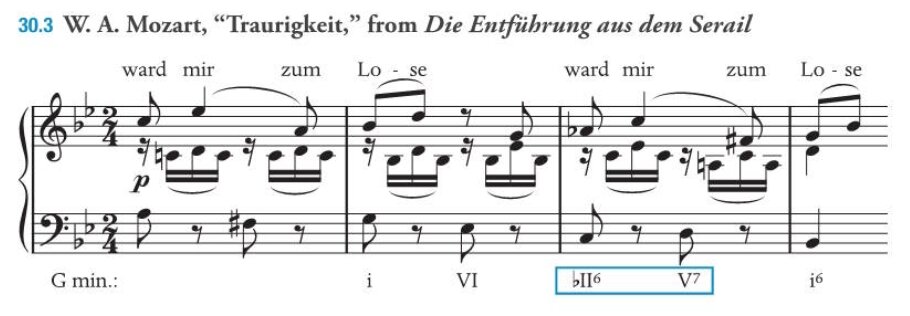
- $♭\text{II}^6-$ cad.$_4^6-\text{V}^7$
- sound
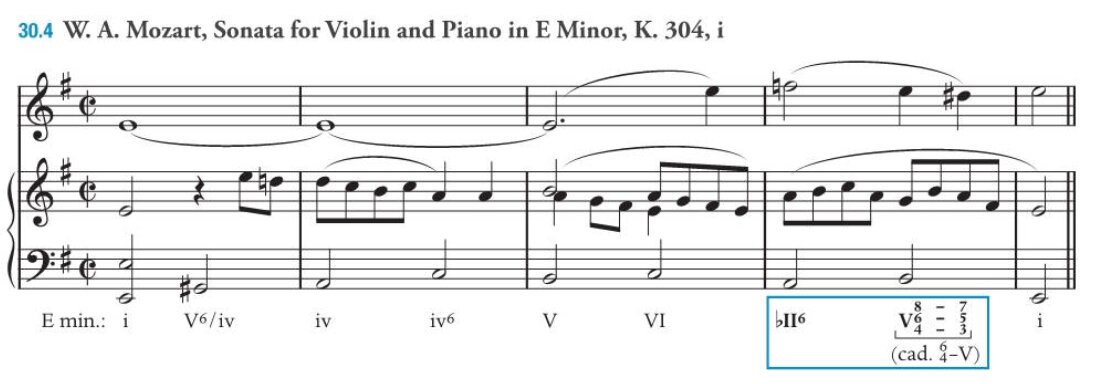
- $♭\text{II}^6-\text{vii}^{\circ 7}/\text{V}-\text{V}$ (#D#FAC is the $\text{vii}^{\circ 7}$ in e minor)
- sound
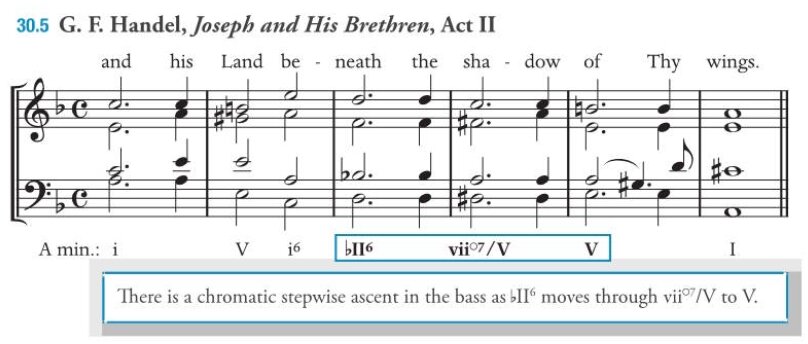
voice leading
- in minor, root and fifth of $♭\text{II}$ are tendency tones; do not double the tendency tones (can double the third, which is the bass of $\text{N}^6$)
- in minor, lowered $\hat{2}$ move a whole note (melodic diminished third) down to the leading tone $\hat{7}$

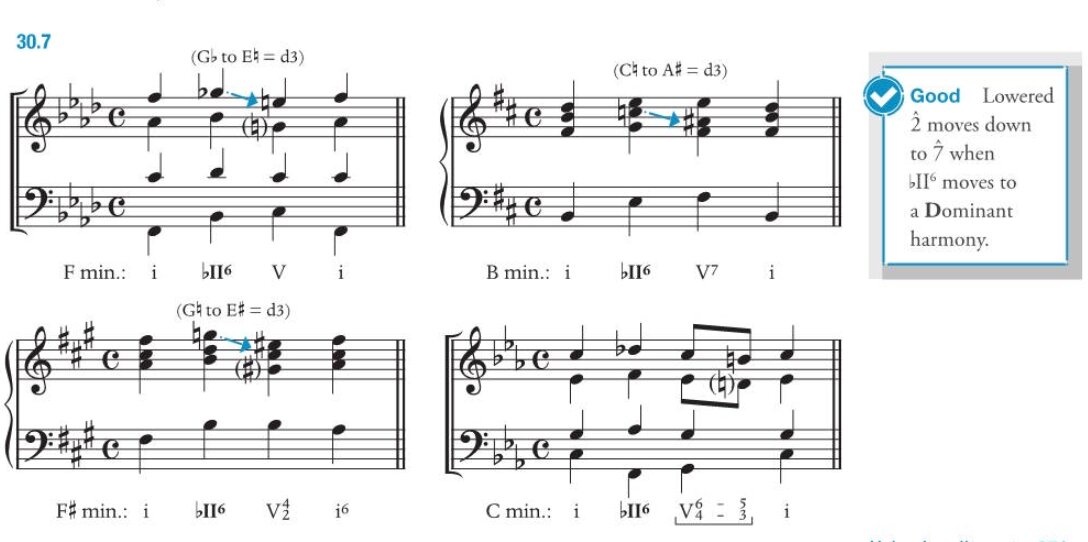
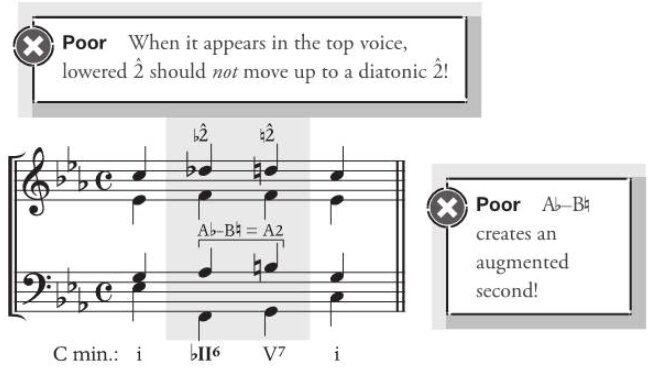
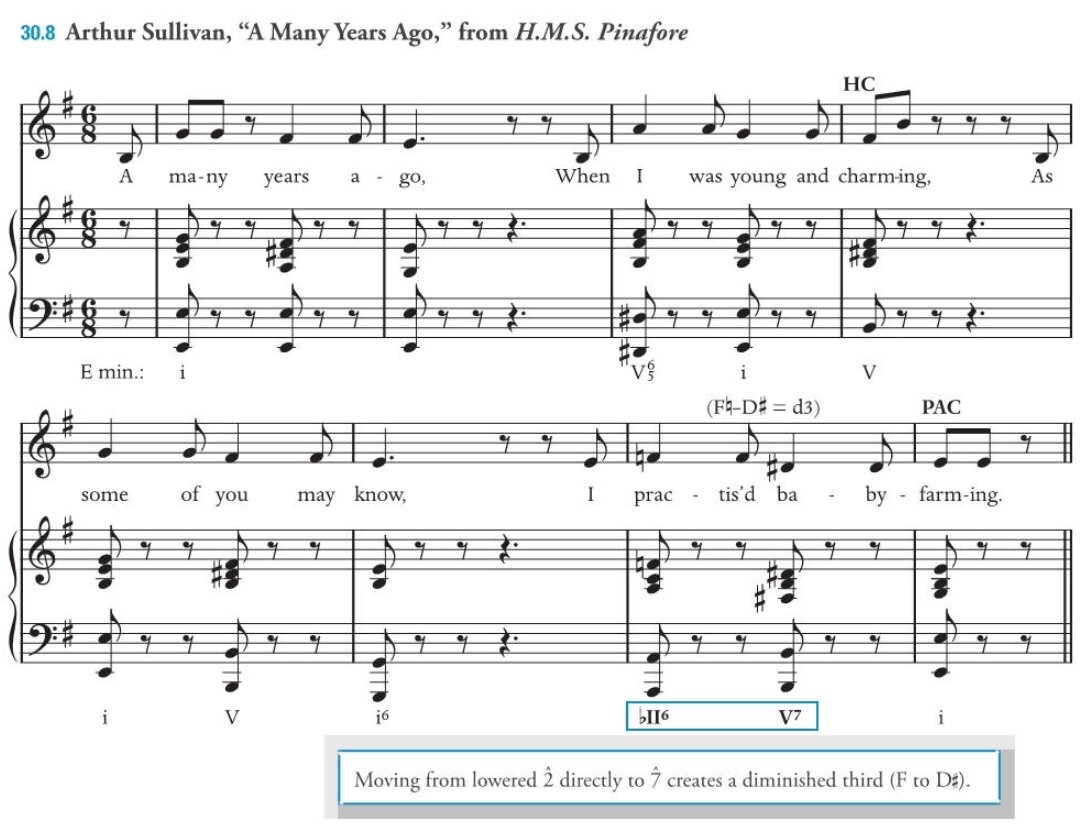
Augmented 6th
- major 6th plus semitone (10-semitone interval)
- $\hat{1}-$ lower note interval: minor 6th
- $\hat{1}-$ higher note interval: augmented 4th
- both are tendency tones (in both major and minor)
- major: ↓la - ↑fa
- resolve to $\hat{5}-\hat{5}$ octave (sol-sol)
- minor: fa - ↑re
- resolve to $\hat{5}-\hat{5}$ octave (mi-mi)
- leads to V


you might need to use double sharp or double flat

italian/french/german
- differs by what’s added in between the lowest and highest notes
- italian: $\hat{1}$ (doubled)
- major: ↓la-do-↑fa
- minor: fa-la-↑re
- french: $\hat{1},\hat{2}$
- major: ↓la-do-re-↑fa
- minor: fa-la-si-↑re
- german: $\hat{1}$, minor $\hat{3}$ (in major is lowered $\hat{3}$, in minor is just $\hat{3}$)
- major: ↓la-do-↓mi-↑fa
- minor: fa-la-do-↑re
- enharmonically equivalent to a dominant seventh chord (both major and minor)
- all notes are a semitone higher than the $\text{V}^7$
- when sol-si-re-fa dominant seventh is replaced as ↓re-fa-↓la-si, which is a dominant seventh with a root that is a tritone apart from the original root, it’s called tritone substitution
- all notes are a semitone highr than $\text{I}^7$
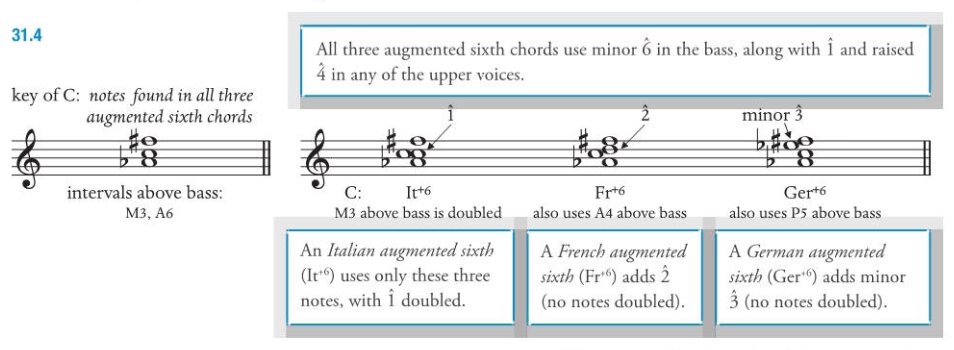
how to notate

in major keys you may occasionally write $\text{Ger}^{+6}$ in two different ways
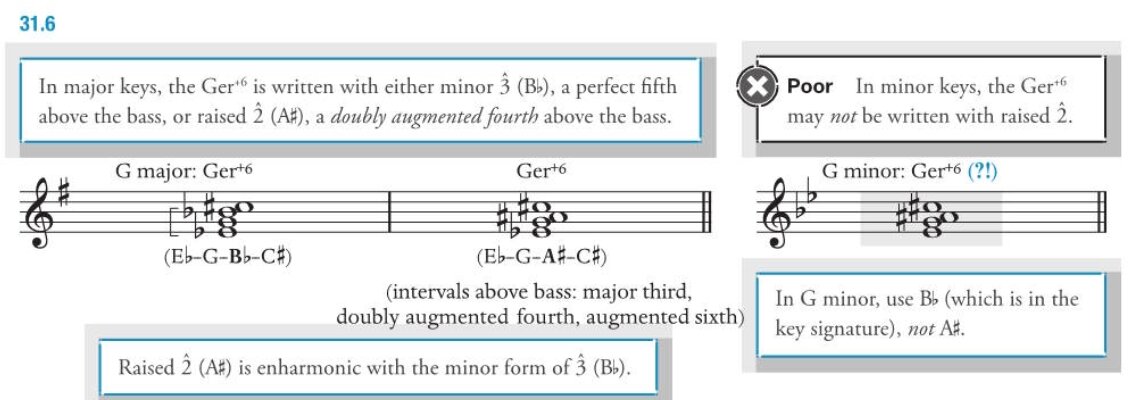
progressions
$\text{It}^{+6}/\text{Fr}^{+6}-\text{V}$
$\text{It}^{+6}/\text{Fr}^{+6}-\text{V}_{4-3}^{6-5}$
$\text{It}^{+6}/\text{Fr}^{+6}-\text{V} \text{ sound in minor}$


- $\text{Ger}^{+6}-\text{V}$ is bad because of the parallel 5th; needs cadential $_4^6$
- $\text{Ger}^{+6}-\text{V}_{4-3}^{6-5}$
- $\text{Ger}^{+6}-\text{V}\underset{\text{4-3}}{\overset{\text{8-7}}{\Tiny{\text{6-5}}}}$
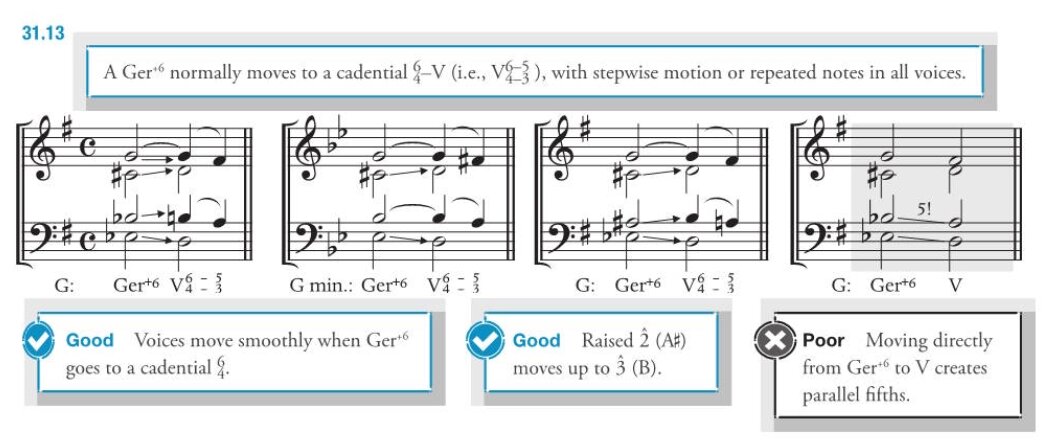
preceding chord
any harmony that may precede $\text{V}$
- tonic
- sound

- $\text{VI}/\text{IV}^6$
- sound


as embellishment of $\text{V}$

Other altered chords
unlike borrowed chords, use notes that are not found in the parallel major or minor key
$\text{VI}♯$
major triad formed by submediant triad raising the third (la-#do-mi)
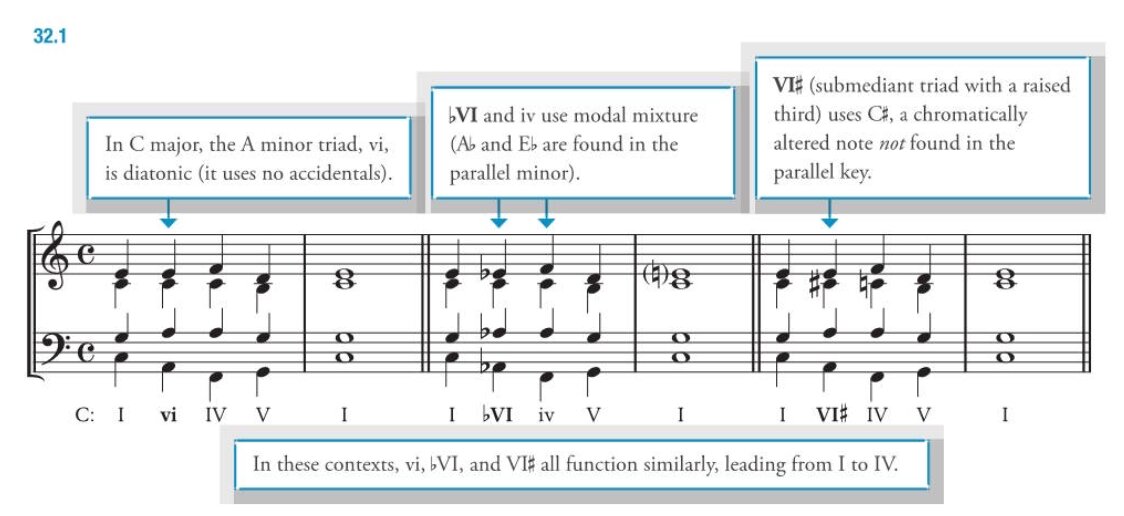
$\text{III}♯$
major triad with raised third rooted at $\hat{3}$ (mi-#sol-si)
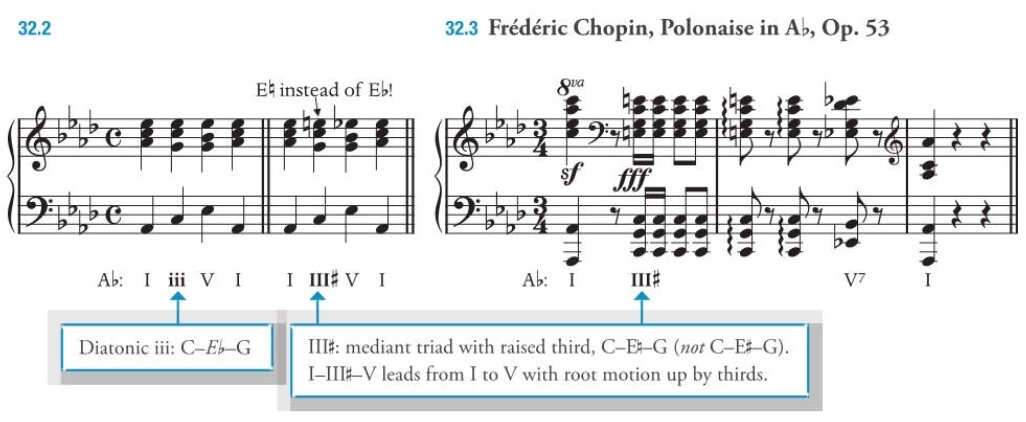
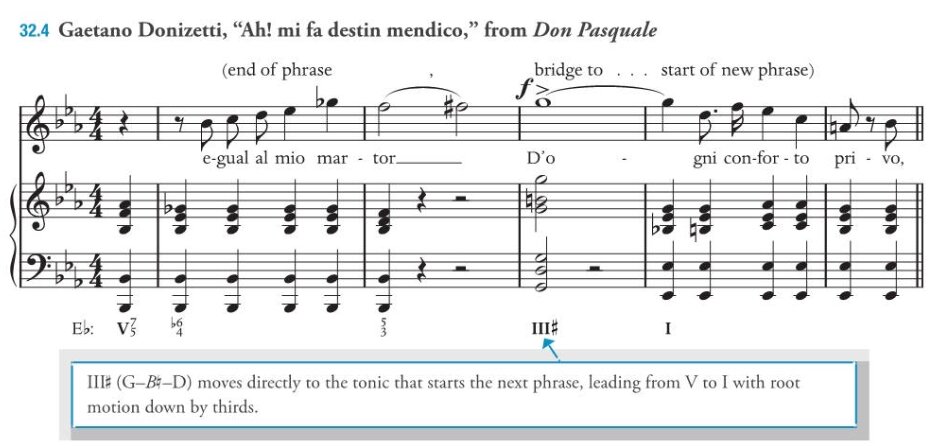
$\text{V}$ with raised fifth
- $\text{V}^{+}$
- $\text{V}_{+5}^{\phantom{+}7}$

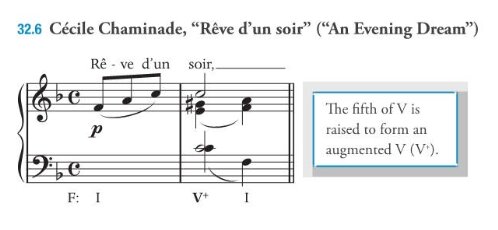
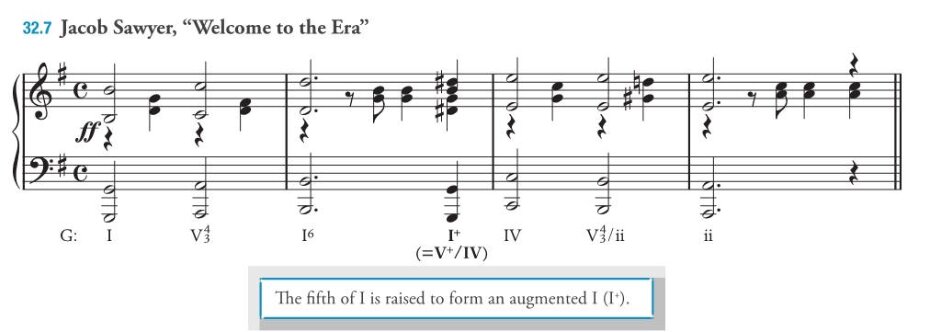
$\text{V}^7$ (or inversions) can also be altered with lowered fifth
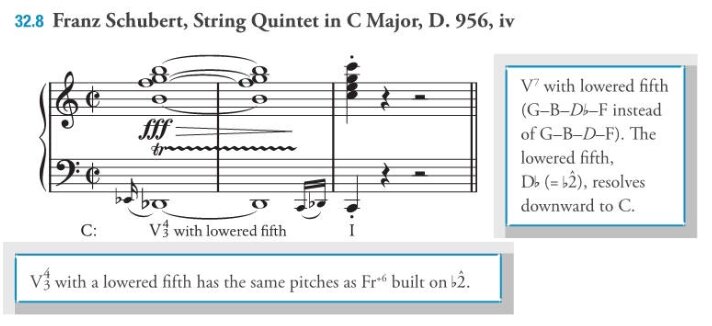
$♭\text{II}$ in root position
- subdominant
- (neopolitan 6th is the first inversion)
- usually only appears in minor key, but may also appear as borrowed chord in major key
aug 6th with other bass
using raised $\hat{4}$
- $\text{Ger}^{+6}$ with raised $\hat{4}$ as bass (an inversion of $\text{Ger}^{+6}$) is called “German diminished third chord”

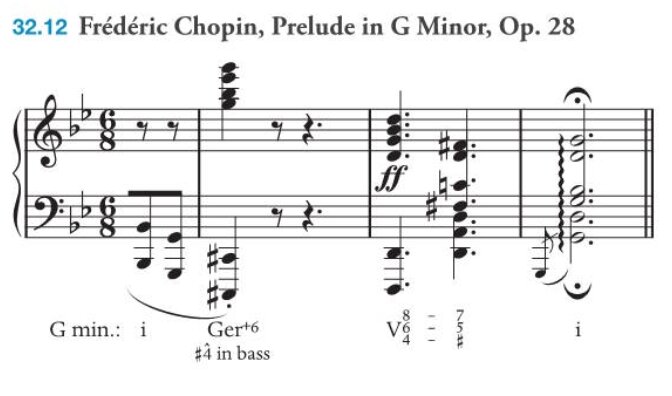
common-tone chromatic chord
the shared tone (common-tone) is usually sustained

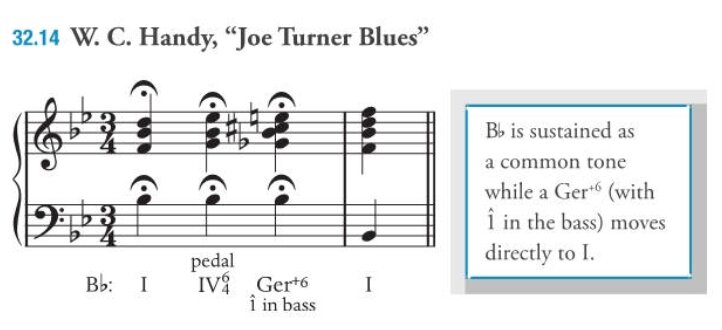
common tone $^{\circ 7}$
#D#FAC: a fully diminished chord
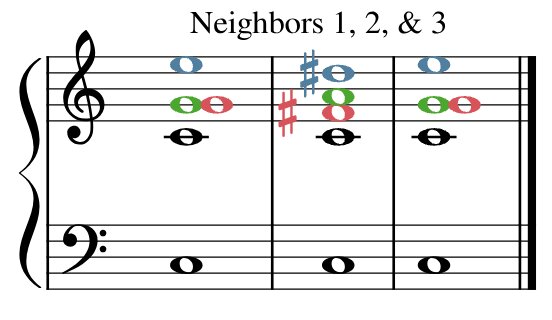
- often built when the root of a triad is sustained while the third and fifth are decorated by chromatic neighbors.
- can also result from passing tones (note other than bass is sustained)
Chromatic Modulation
Modulation to distant keys (differ by more than one accidental)
pivot chords involving mixture
When modulating to distant keys
- the pivot chord is often diatonic to only one of the keys
- the pivot chord is a chromatic borrowed chord on the other key
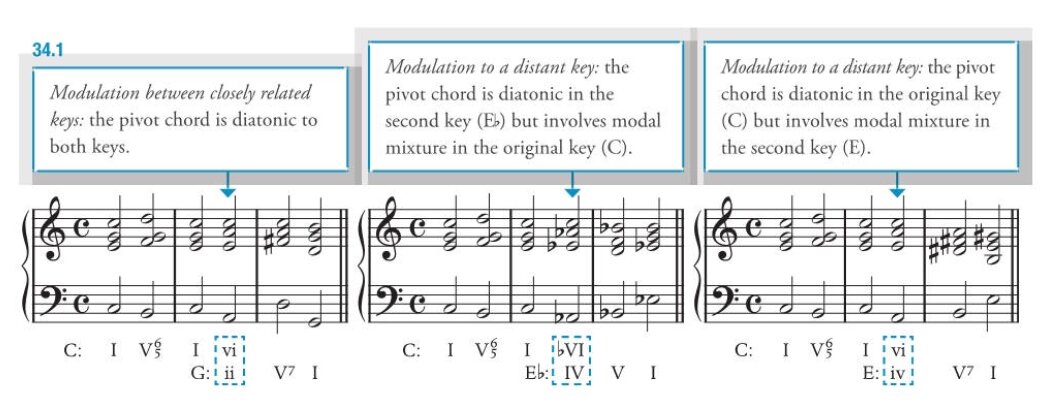
common tone modulation
the last chord before the modulation shares just one tone with the first chord after the modulation, so that only a single tone serves as a pivot.
enharmonic modulation
any diminished 7th function as four $\text{vii}^{\circ 7}$ in four different minor keys and their parallel majors

German augmented 6th chords could also be enharmonically re-interpreted as dominant 7th. This could be done in both direction.


- $\text{Ger}^{+6}$ -> dominant 7th
- sound
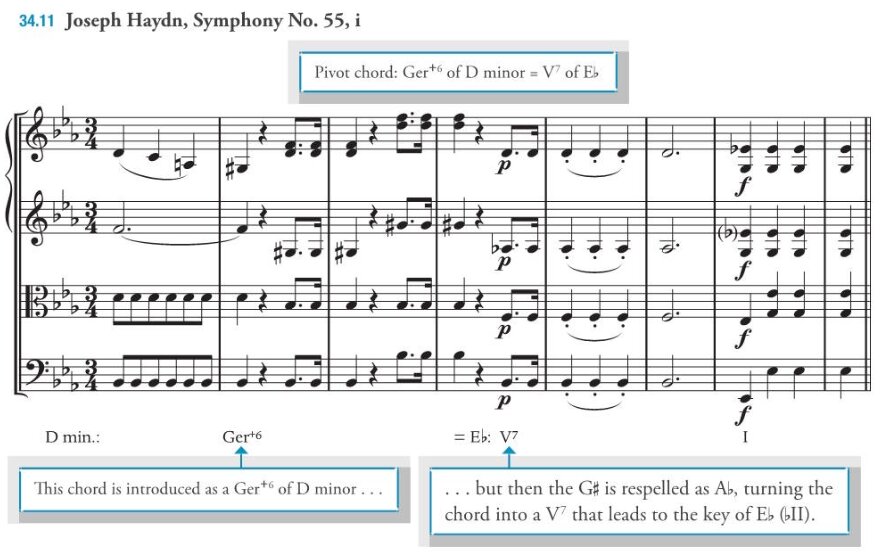
- dominant 7th -> $\text{Ger}^{+6}$
- sound
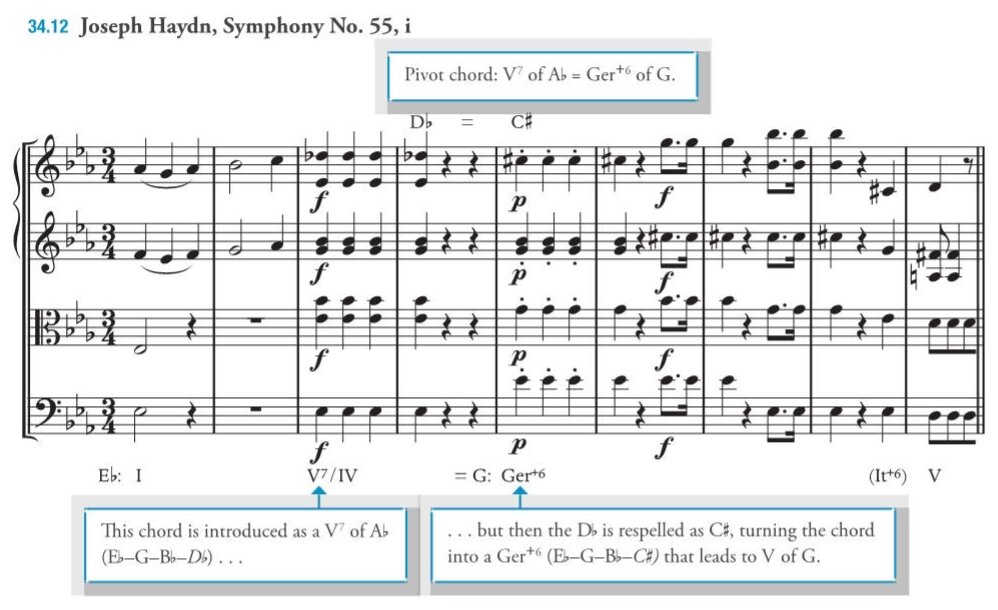
other modulation
- abrupt change
- sound

modulate to $♯\text{III}, ♯\text{VI}$
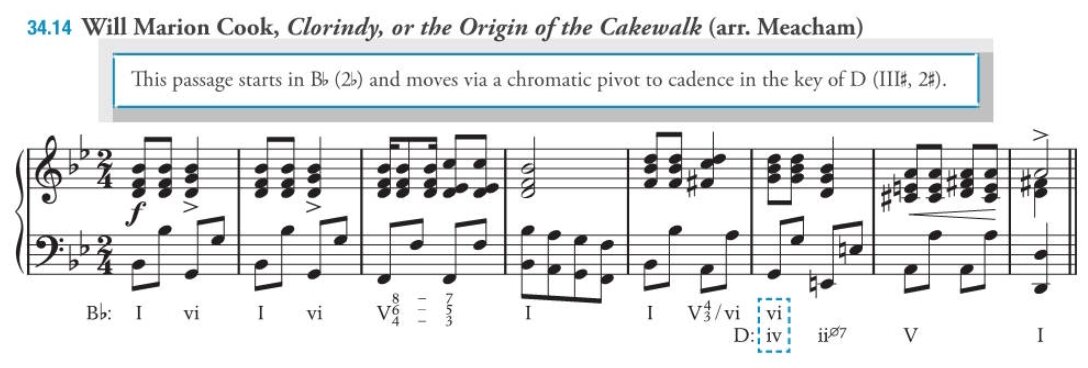
- modulate to $♭\text{III}, ♭\text{VI}$
- tonic not in the origial key
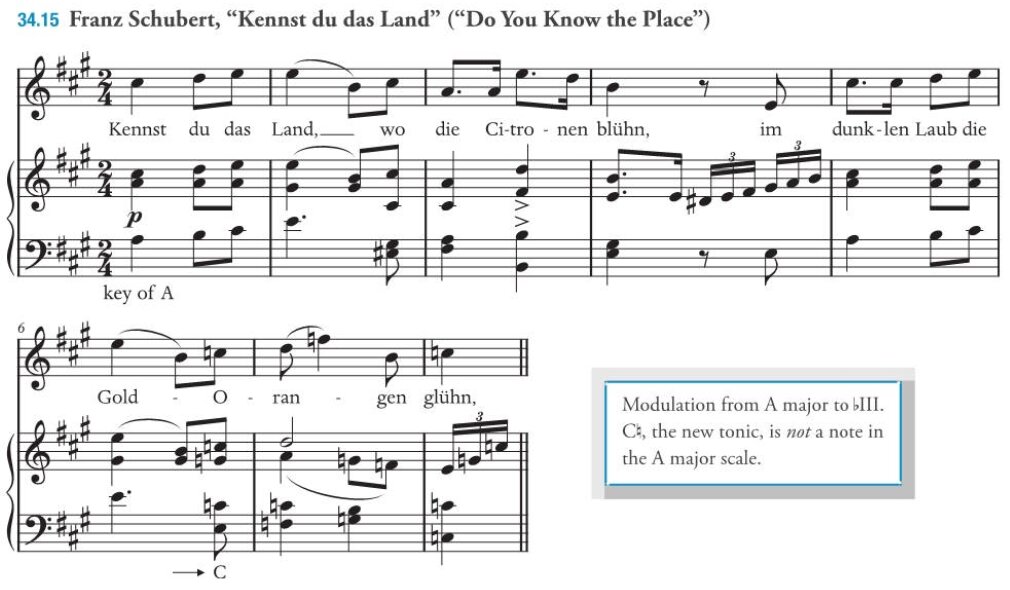
- successive modulation: modulate back to the original key
- sound
